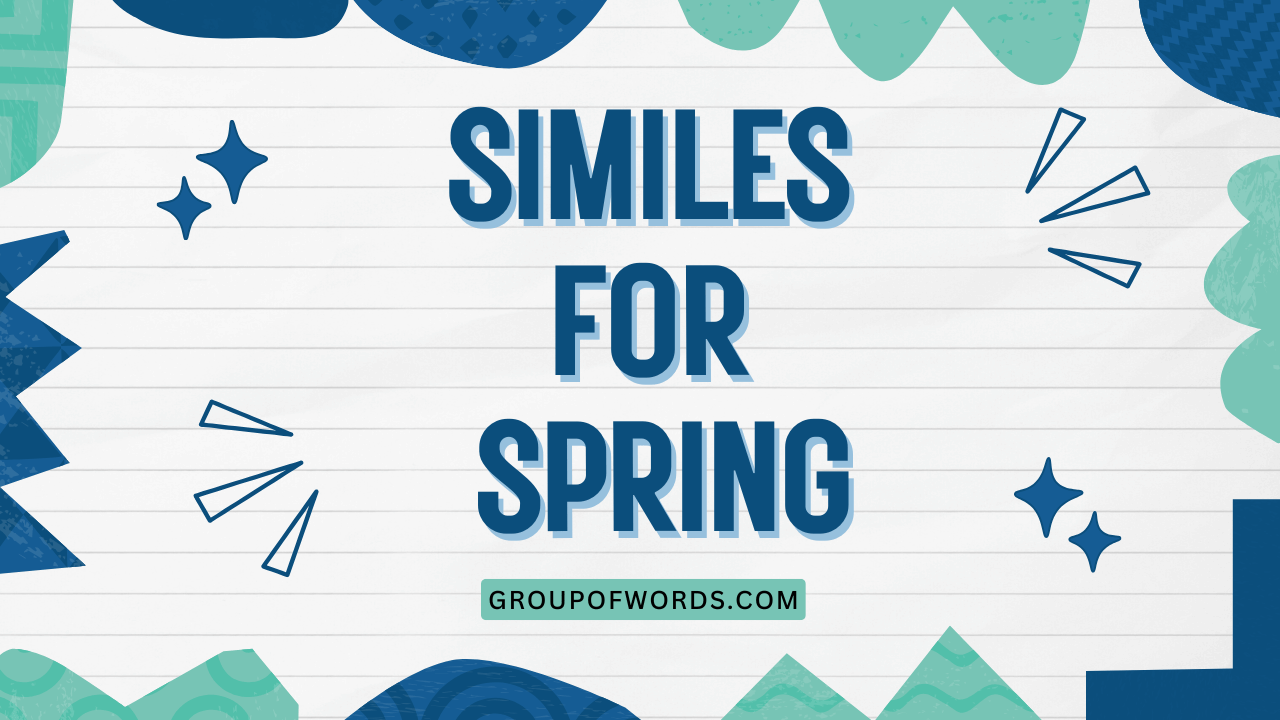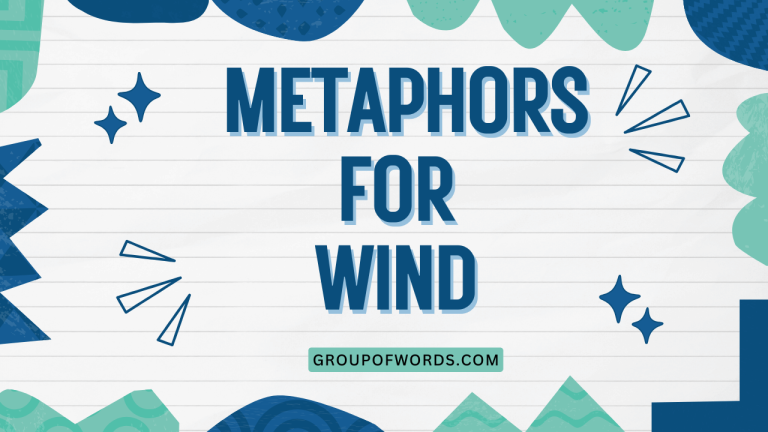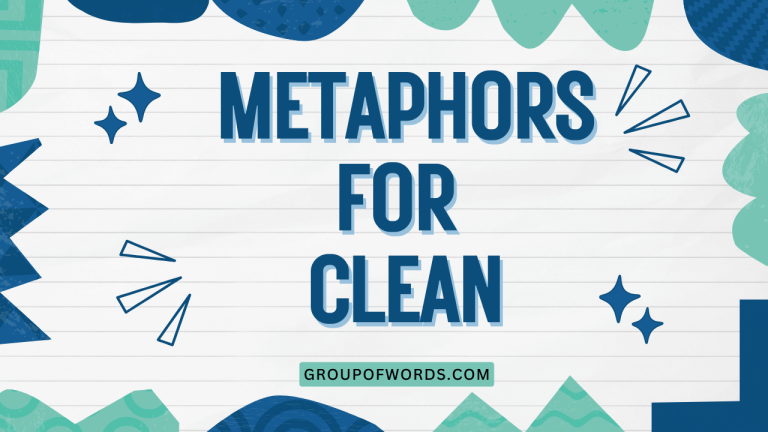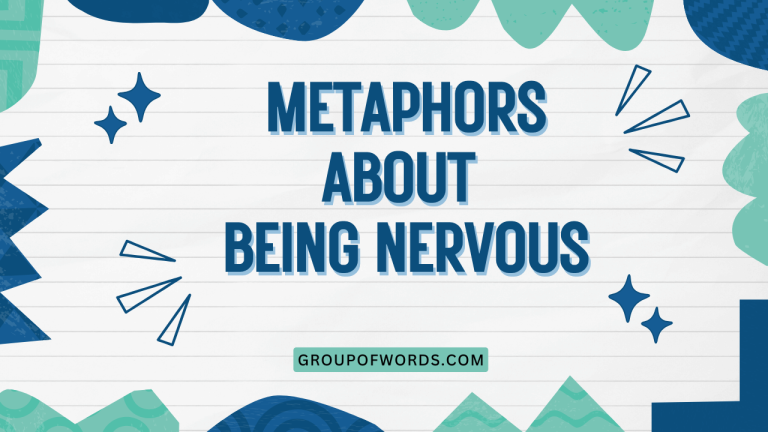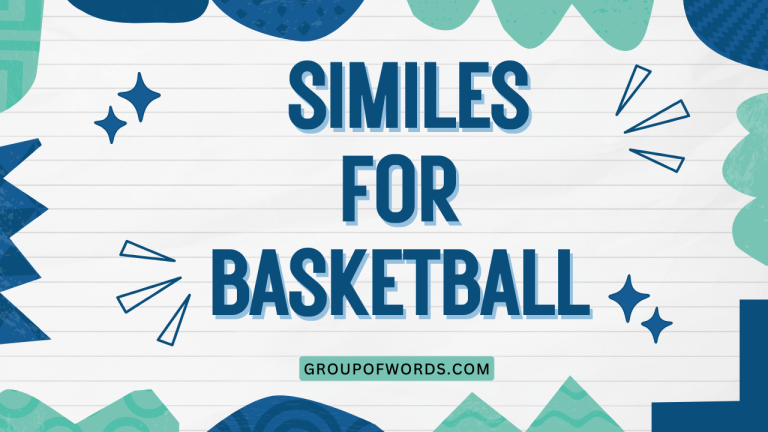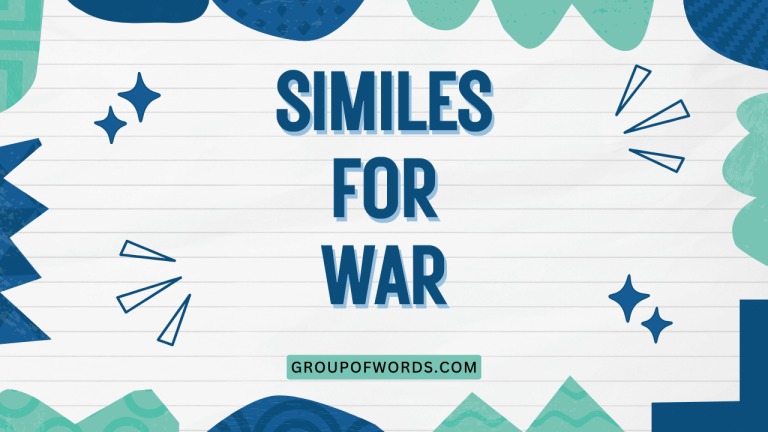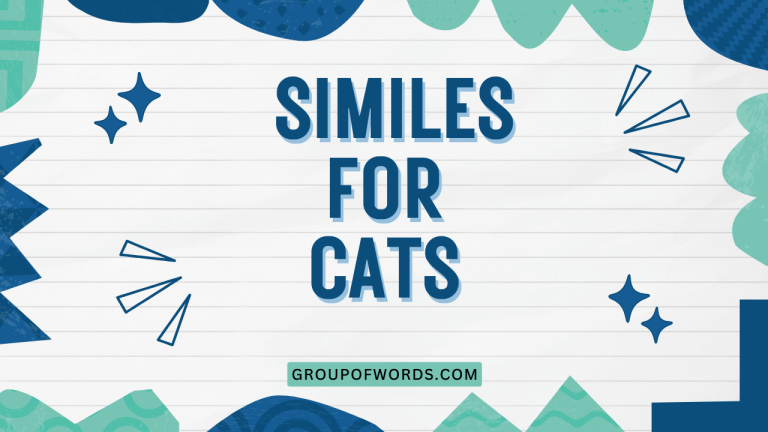Spring Similes: A Guide to Lyrical Comparisons
Understanding similes is crucial for enhancing your descriptive writing and comprehension skills. Similes allow you to create vivid imagery and make connections between seemingly disparate things, enriching your communication.
This article provides a comprehensive guide to using similes effectively, particularly in the context of spring. Whether you’re a student, writer, or simply someone looking to improve their English, this guide will offer valuable insights and practical exercises to master the art of simile creation and usage.
This guide will cover the definition of similes, their structural components, various types, usage rules, common mistakes, and advanced applications. Through detailed explanations, numerous examples, and practical exercises, you’ll gain a solid understanding of how to use similes to add depth and color to your writing, especially when describing the vibrant season of spring.
Table of Contents
- Definition of Simile
- Structural Breakdown of Similes
- Types of Similes
- Examples of Spring Similes
- Usage Rules for Similes
- Common Mistakes with Similes
- Practice Exercises
- Advanced Topics in Similes
- Frequently Asked Questions
- Conclusion
Definition of Simile
A simile is a figure of speech that directly compares two unlike things using the words “like” or “as.” The purpose of a simile is to create a vivid image or to emphasize a particular quality by drawing a comparison to something familiar. Unlike a metaphor, which implies that one thing is another, a simile acknowledges that the two things are distinct but share a common characteristic.
Similes are essential tools for writers and speakers who want to make their language more engaging and memorable. They allow for a deeper understanding and appreciation of the subject being described.
In the context of spring, similes can help us to capture the essence of the season’s beauty, energy, and renewal.
The function of a simile is to enhance understanding or appreciation by drawing a parallel between two different entities. It clarifies and amplifies meaning by highlighting shared attributes.
Similes are used across various forms of communication, including literature, poetry, everyday conversation, and advertising.
Structural Breakdown of Similes
A simile typically consists of three main components: the subject, the linking word (like or as), and the basis of comparison. The subject is the thing being described. The linking word connects the subject to the thing it’s being compared to. The basis of comparison is the quality or characteristic that the two things share.
The basic formula for a simile is: Subject + Linking Word + Object of Comparison. For example, “The spring breeze is like a gentle whisper.” Here, “spring breeze” is the subject, “like” is the linking word, and “gentle whisper” is the object of comparison. The basis of comparison is the quality of being gentle and soft.
Understanding this structure allows you to create more effective and meaningful similes. By carefully selecting the subject, linking word, and object of comparison, you can paint a vivid picture in the reader’s mind and convey your intended message with greater impact.
Types of Similes
While all similes use “like” or “as” to make a comparison, they can be categorized based on the type of comparison they make or the effect they create. Here are a few common types of similes:
Descriptive Similes
Descriptive similes focus on providing a vivid description of the subject by comparing it to something else. These similes often appeal to the senses, helping the reader to visualize, hear, smell, taste, or feel the subject more intensely.
Emphatic Similes
Emphatic similes are used to emphasize a particular quality or characteristic of the subject. These similes often use strong or exaggerated comparisons to drive home the point and make a lasting impression on the reader.
Humorous Similes
Humorous similes are designed to be funny or ironic. They often use unexpected or absurd comparisons to create a comedic effect.
These similes can be a great way to add levity to your writing and engage the reader in a lighthearted way.
Figurative Similes
Figurative similes use abstract or symbolic comparisons to convey deeper meanings or emotions. These similes require the reader to think more creatively and interpret the comparison on a metaphorical level.
Examples of Spring Similes
Spring offers a rich tapestry of imagery, making it a fertile ground for similes. The following sections provide numerous examples of similes related to nature, weather, and feelings associated with spring.
Nature Similes
Spring is a time of rebirth and renewal, and nature provides countless opportunities for simile creation. From blossoming flowers to chirping birds, the season offers a wealth of inspiration for descriptive and evocative comparisons.
The following table contains numerous examples of nature-related spring similes. These examples illustrate how to compare various natural elements associated with spring to other objects or concepts, enhancing the reader’s understanding and appreciation of the season’s beauty.
| Simile | Explanation |
|---|---|
| The cherry blossoms are like pink snow. | Compares the appearance of cherry blossoms to snow, highlighting their delicate and ephemeral nature. |
| The new leaves are as green as emeralds. | Emphasizes the vibrant green color of new leaves by comparing them to precious emeralds. |
| The robin’s song is like a cheerful melody. | Describes the robin’s song as being pleasant and uplifting, similar to a cheerful melody. |
| The daffodils stand as tall as tiny trumpets. | Compares the shape and stature of daffodils to trumpets, highlighting their vibrant and proud appearance. |
| The grass is as soft as a velvet carpet. | Describes the texture of the grass as being smooth and luxurious, like a velvet carpet. |
| The blooming trees are like a painter’s masterpiece. | Compares the beauty of blooming trees to a work of art, emphasizing their aesthetic appeal. |
| The buzzing bees are as busy as tiny workers. | Highlights the industrious nature of bees by comparing them to diligent workers. |
| The garden is like a vibrant tapestry. | Describes the garden as a colorful and intricate work of art, similar to a tapestry. |
| The tulips are as bright as flames. | Emphasizes the vivid colors of tulips by comparing them to flames. |
| The sprouting seeds are like tiny miracles. | Highlights the wonder and potential of sprouting seeds by comparing them to miracles. |
| The willow branches are like weeping arms. | Compares the drooping branches of a willow tree to weeping arms, conveying a sense of sorrowful beauty. |
| The lily pads are as green as small islands. | Describes the appearance of lily pads, comparing them to small, verdant islands. |
| The butterflies flutter like colorful confetti. | Compares the movement of butterflies to confetti, emphasizing their playful and festive nature. |
| The morning dew is like a million tiny diamonds. | Describes the sparkling appearance of morning dew, comparing it to precious diamonds. |
| The freshly turned soil is as dark as chocolate. | Compares the color of freshly turned soil to chocolate, creating a sensory image. |
| The apple blossoms smell like sweet perfume. | Describes the fragrance of apple blossoms as being pleasant and alluring, similar to perfume. |
| The birdhouses stand as quaint as miniature homes. | Compares the appearance of birdhouses to tiny homes, highlighting their charm and appeal. |
| The climbing vines are like emerald snakes. | Compares the appearance and movement of climbing vines to snakes, adding a touch of intrigue. |
| The dandelions spread as quickly as gossip. | Highlights the rapid spread of dandelions, comparing it to the spread of gossip. |
| The sunflower faces are like golden suns. | Compares the appearance of sunflowers to the sun, emphasizing their bright and cheerful nature. |
| The buds swell like tiny balloons. | Describes the swelling of buds, comparing them to inflating balloons. |
| The garden snails move as slowly as molasses. | Compares the slow pace of garden snails to the viscous nature of molasses. |
| The tadpoles swim like tiny commas. | Describes the shape and movement of tadpoles, comparing them to commas. |
| The spiderwebs glisten like delicate lace. | Compares the intricate design and appearance of spiderwebs to lace. |
Weather Similes
Spring weather is notoriously unpredictable, ranging from gentle sunshine to sudden rain showers. These fluctuations provide ample opportunities for creating similes that capture the dynamic nature of the season’s weather patterns.
The following table presents numerous examples of weather-related spring similes, illustrating how to compare spring weather phenomena to other concepts or objects. These examples aim to enhance the reader’s understanding and appreciation of the season’s varied weather conditions.
| Simile | Explanation |
|---|---|
| The spring rain is like a gentle caress. | Compares the feeling of spring rain to a gentle touch, highlighting its soothing quality. |
| The sunshine is as warm as a mother’s hug. | Emphasizes the comforting warmth of the spring sunshine by comparing it to a mother’s hug. |
| The spring breeze is like a playful child. | Describes the spring breeze as being lighthearted and mischievous, similar to a playful child. |
| The clouds drift as slowly as lazy ships. | Compares the movement of clouds to the slow pace of ships, highlighting their leisurely drift. |
| The fog hangs as heavy as a wet blanket. | Describes the density and weight of the fog, comparing it to a wet blanket. |
| The thunder rumbles like a distant drum. | Compares the sound of thunder to a drum, emphasizing its deep and resonant quality. |
| The lightning flashes as bright as a camera flash. | Highlights the intense brightness of lightning by comparing it to a camera flash. |
| The hail falls like tiny marbles. | Describes the size and appearance of hail, comparing it to marbles. |
| The rainbow arches as colorful as a painted bridge. | Emphasizes the vibrant colors of a rainbow by comparing it to a painted bridge. |
| The puddles shimmer like scattered jewels. | Describes the sparkling appearance of puddles, comparing them to jewels. |
| The wind whispers like a secret. | Compares the sound of the wind to a whispered secret, adding an element of mystery. |
| The air feels as fresh as a mountain stream. | Describes the invigorating quality of the air, comparing it to a mountain stream. |
| The sky is as blue as a robin’s egg. | Compares the color of the sky to the distinctive blue of a robin’s egg. |
| The evening mist is like a soft curtain. | Describes the gentle and enveloping nature of the evening mist, comparing it to a curtain. |
| The dew drops cling like tiny tears. | Compares the appearance of dew drops to tears, conveying a sense of delicate beauty. |
| The sunrise is as radiant as a golden crown. | Emphasizes the brilliant light of the sunrise, comparing it to a golden crown. |
| The sunset fades like a watercolor painting. | Describes the gradual fading of the sunset, comparing it to a watercolor painting. |
| The clouds gather as ominously as dark beasts. | Compares the gathering of clouds to the ominous presence of dark beasts. |
| The drizzle falls like a gentle sieve. | Describes the fine and persistent quality of drizzle, comparing it to a sieve. |
| The fog rolls in as silently as a ghost. | Compares the silent arrival of fog to the movement of a ghost. |
| The sun peeks through the clouds like a shy smile. | Describes the sun appearing through the clouds, comparing it to a shy smile. |
| The air smells as clean as freshly laundered linen. | Compares the scent of the air to the clean smell of freshly laundered linen. |
| The temperature rises as steadily as mercury in a thermometer. | Describes the gradual increase in temperature, comparing it to the rising mercury in a thermometer. |
| The weather changes as quickly as a chameleon changes color. | Highlights the rapid changes in spring weather, comparing it to a chameleon’s color change. |
Feeling Similes
Spring is often associated with feelings of joy, hope, and renewal. These emotions can be effectively conveyed through similes that compare them to tangible objects or experiences.
The following table provides numerous examples of feeling-related spring similes, illustrating how to compare emotions associated with spring to other concepts or objects. These examples aim to enhance the reader’s understanding and appreciation of the emotional impact of the season.
| Simile | Explanation |
|---|---|
| Hope blossoms like the spring flowers. | Compares the feeling of hope to the blossoming of spring flowers, highlighting its growth and beauty. |
| Joy feels as light as a butterfly’s wing. | Emphasizes the lightness and freedom of joy by comparing it to a butterfly’s wing. |
| Love grows like the new grass in spring. | Describes the growth of love as being natural and vibrant, similar to the growth of new grass. |
| Happiness bubbles up like a spring from the earth. | Compares the feeling of happiness to a spring of water, highlighting its spontaneous and refreshing nature. |
| Peace settles like a gentle spring rain. | Describes the feeling of peace as being calming and soothing, like a gentle rain. |
| Excitement hums like a bee in the garden. | Compares the feeling of excitement to the buzzing of a bee, emphasizing its energetic quality. |
| Renewal washes over me like a spring tide. | Describes the feeling of renewal as being cleansing and transformative, like a spring tide. |
| Inspiration blooms like a spring garden. | Compares the feeling of inspiration to the blooming of a garden, highlighting its creative potential. |
| Energy surges like a spring river. | Describes the feeling of energy as being powerful and flowing, like a river. |
| Optimism shines as bright as the spring sun. | Emphasizes the positivity of optimism by comparing it to the bright spring sun. |
| Contentment settles like a bird on a branch. | Compares the feeling of contentment to a bird resting peacefully on a branch. |
| Longing stirs like the first shoots of spring. | Describes the feeling of longing as being subtle yet persistent, like the first shoots of spring. |
| Awe strikes like the first sight of spring blossoms. | Compares the feeling of awe to the breathtaking sight of spring blossoms. |
| Gratitude warms like the spring sunshine. | Describes the comforting feeling of gratitude, comparing it to the warmth of the spring sunshine. |
| Nostalgia drifts like the scent of spring flowers. | Compares the feeling of nostalgia to the evocative scent of spring flowers. |
| Anticipation tingles like the first spring breeze. | Describes the feeling of anticipation as being exciting and refreshing, like the first spring breeze. |
| Freedom sings like a bird released in spring. | Compares the feeling of freedom to the joyful song of a bird released in spring. |
| Wonder sparkles like dew on spring grass. | Describes the feeling of wonder as being magical and enchanting, like dew on spring grass. |
| Serenity flows like a gentle spring stream. | Compares the feeling of serenity to the peaceful flow of a spring stream. |
| Rejuvenation feels as profound as the change from winter to spring. | Emphasizes the transformative power of rejuvenation by comparing it to the change of seasons. |
| Innocence blooms anew, like spring’s first flower. | Compares the rediscovery of innocence to the blooming of the first flower in spring. |
| Dreams take flight as easily as spring birds. | Describes the ease with which dreams can be pursued, comparing it to the effortless flight of spring birds. |
| Memories resurface as vividly as spring colors. | Compares the clarity of resurfaced memories to the vibrant colors of spring. |
| Creativity awakens as powerfully as spring’s life force. | Emphasizes the potent awakening of creativity, comparing it to the life force of spring. |
Usage Rules for Similes
Using similes effectively requires adherence to certain rules. The most important rule is to ensure that the comparison is logical and meaningful.
The two things being compared should share a common characteristic that is relevant to the context.
Another important rule is to avoid clichéd similes. Overused similes, such as “as busy as a bee” or “as strong as an ox,” can make your writing sound unoriginal and uninspired.
Instead, strive to create fresh and imaginative comparisons that will surprise and delight your readers.
Finally, be mindful of the tone and style of your writing. Similes should be used judiciously and should complement the overall message you are trying to convey.
Avoid using similes that are too elaborate or distracting, as they can detract from the clarity and flow of your writing.
Key Considerations:
- Clarity: Ensure the comparison is clear and easy to understand.
- Relevance: The shared characteristic must be relevant to the subject.
- Originality: Avoid clichés to create a fresh and engaging image.
- Context: The simile should fit the tone and style of your writing.
Common Mistakes with Similes
One common mistake is confusing similes with metaphors. Remember that similes use “like” or “as” to make a comparison, while metaphors imply that one thing is another. For example, “The spring day is like a dream” is a simile, while “The spring day is a dream” is a metaphor.
Another mistake is using illogical or nonsensical comparisons. The two things being compared should have a clear and recognizable connection.
For example, “The spring breeze is like a refrigerator” is not a good simile because there is no logical connection between a breeze and a refrigerator.
A further common error is using too many similes in a short space. Overusing similes can make your writing sound forced and artificial.
Use similes sparingly and only when they add real value to your writing.
Here’s a table illustrating common mistakes with similes, along with corrections:
| Incorrect | Correct | Explanation |
|---|---|---|
| The flower is a sun. | The flower is like a sun. | Confusion of metaphor and simile. “Like” or “as” is needed for a simile. |
| The rain is like a rock. | The rain is like a gentle shower. | Illogical comparison. Rain is not hard or heavy like a rock. |
| The tree is as a giant. | The tree is as tall as a giant. | Missing adjective to complete the comparison. |
| He runs like. | He runs like the wind. | Incomplete simile. Needs an object of comparison. |
| The grass is green as. | The grass is as green as emeralds. | Incomplete simile. Needs an object of comparison. |
Practice Exercises
Test your understanding of similes with these practice exercises. Each exercise consists of ten questions designed to challenge your ability to identify, create, and use similes effectively.
Exercise 1: Identifying Similes
Identify the similes in the following sentences:
- The spring air felt like a warm embrace.
- Her laughter was music to his ears.
- The tulips stood as proud as soldiers.
- Time is a thief.
- The clouds drifted like cotton balls in the sky.
- His words were sharper than a knife.
- The city is a jungle.
- The flowers danced like ballerinas in the breeze.
- She is the sun in my life.
- The water flowed as smoothly as silk.
| Question | Answer |
|---|---|
| 1. The spring air felt like a warm embrace. | The spring air felt like a warm embrace. |
| 2. Her laughter was music to his ears. | No simile present. This is a metaphor. |
| 3. The tulips stood as proud as soldiers. | The tulips stood as proud as soldiers. |
| 4. Time is a thief. | No simile present. This is a metaphor. |
| 5. The clouds drifted like cotton balls in the sky. | The clouds drifted like cotton balls in the sky. |
| 6. His words were sharper than a knife. | No simile present. Similar, but uses “than” instead of “like” or “as”. |
| 7. The city is a jungle. | No simile present. This is a metaphor. |
| 8. The flowers danced like ballerinas in the breeze. | The flowers danced like ballerinas in the breeze. |
| 9. She is the sun in my life. | No simile present. This is a metaphor. |
| 10. The water flowed as smoothly as silk. | The water flowed as smoothly as silk. |
Exercise 2: Completing Similes
Complete the following similes with appropriate endings:
- The spring breeze is as gentle as __________.
- The grass is as green as __________.
- The flowers smell like __________.
- The rain falls like __________.
- The sun shines as brightly as __________.
- The birds sing like __________.
- The sky is as blue as __________.
- The leaves flutter like __________.
- The air feels as fresh as __________.
- The clouds drift as slowly as __________.
| Question | Answer |
|---|---|
| 1. The spring breeze is as gentle as __________. | The spring breeze is as gentle as a whisper. |
| 2. The grass is as green as __________. | The grass is as green as emeralds. |
| 3. The flowers smell like __________. | The flowers smell like sweet perfume. |
| 4. The rain falls like __________. | The rain falls like tears from the sky. |
| 5. The sun shines as brightly as __________. | The sun shines as brightly as a diamond. |
| 6. The birds sing like __________. | The birds sing like a chorus of angels. |
| 7. The sky is as blue as __________. | The sky is as blue as a robin’s egg. |
| 8. The leaves flutter like __________. | The leaves flutter like butterflies. |
| 9. The air feels as fresh as __________. | The air feels as fresh as a mountain spring. |
| 10. The clouds drift as slowly as __________. | The clouds drift as slowly as lazy ships. |
Exercise 3: Creating Similes
Create similes using the following spring-related subjects:
- Spring rain
- Cherry blossoms
- Birdsong
- Spring sunshine
- New leaves
- Spring breeze
- Blooming trees
- The scent of spring
- Spring colors
- The feeling of spring
| Question | Answer |
|---|---|
| 1. Spring rain | Spring rain is like a gentle caress. |
| 2. Cherry blossoms | Cherry blossoms are as delicate as snowflakes. |
| 3. Birdsong | Birdsong is like a cheerful symphony. |
| 4. Spring sunshine | Spring sunshine is as warm as a loving embrace. |
| 5. New leaves | New leaves are as vibrant as emeralds. |
| 6. Spring breeze | Spring breeze is like a playful whisper. |
| 7. Blooming trees | Blooming trees are like a painter’s masterpiece. |
| 8. The scent of spring | The scent of spring is like sweet perfume in the air. |
| 9. Spring colors | Spring colors are as bright as a rainbow. |
| 10. The feeling of spring | The feeling of spring is like a new beginning. |
Advanced Topics in Similes
For advanced learners, exploring the nuances of similes can lead to more sophisticated writing. This includes understanding how similes interact with other figures of speech, such as metaphors, personification, and hyperbole.
Furthermore, analyzing the use of similes in literature can provide valuable insights into how skilled writers use these devices to create powerful imagery and convey complex ideas. Reading the works of poets and novelists who are known for their masterful use of language can inspire you to experiment with similes in your own writing.
Finally, consider the cultural context of similes. Some comparisons may be more effective or meaningful in certain cultures than others.
Being aware of these cultural nuances can help you to use similes in a way that is both sensitive and impactful.
Frequently Asked Questions
Here are some frequently asked questions about similes:
- What is the difference between a simile and a metaphor?
A simile uses “like” or “as” to compare two unlike things, while a metaphor implies that one thing is another. A simile acknowledges the difference between the two things, whereas a metaphor equates them directly.
- Can a simile be a cliché?
Yes, overused similes can become clichés. It’s best to avoid these and strive for originality in your comparisons.
- How can I make my similes more creative?
Think outside the box and look for unexpected connections between things. Use your senses to create vivid and descriptive comparisons.
- Is it possible to overuse similes in writing?
Yes, using too many similes can make your writing sound forced and artificial. Use them sparingly and only when they add real value.
- What are the key elements of a good simile?
A good simile should be clear, relevant, original, and appropriate for the context of your writing.
- How do similes enhance writing?
Similes enhance writing by creating vivid imagery, emphasizing specific qualities, and making abstract ideas more concrete and understandable.
- Are similes only used in literature?
No, similes are used in various forms of communication, including everyday conversation, advertising, and public speaking.
- Can a simile be negative?
Yes, similes can be used to make negative comparisons, such as “He is as stubborn as a mule.”
Conclusion
Mastering the art of simile creation and usage is essential for anyone looking to enhance their writing and communication skills. By understanding the definition, structure, types, and usage rules of similes, you can create vivid imagery, emphasize key qualities, and make your language more engaging and memorable.
Remember to avoid common mistakes, such as confusing similes with metaphors or using clichéd comparisons. Practice creating your own similes and analyzing the use of similes in literature to further develop your skills.
With dedication and practice, you can become a master of the simile and use it to add depth and color to your writing, especially when describing the vibrant season of spring.
As you continue your journey in mastering similes, remember that the key is practice and observation. Pay attention to how skilled writers use similes, and don’t be afraid to experiment with your own unique comparisons.
The more you practice, the more natural and effective your similes will become, adding richness and depth to your writing. Happy simile-ing!
